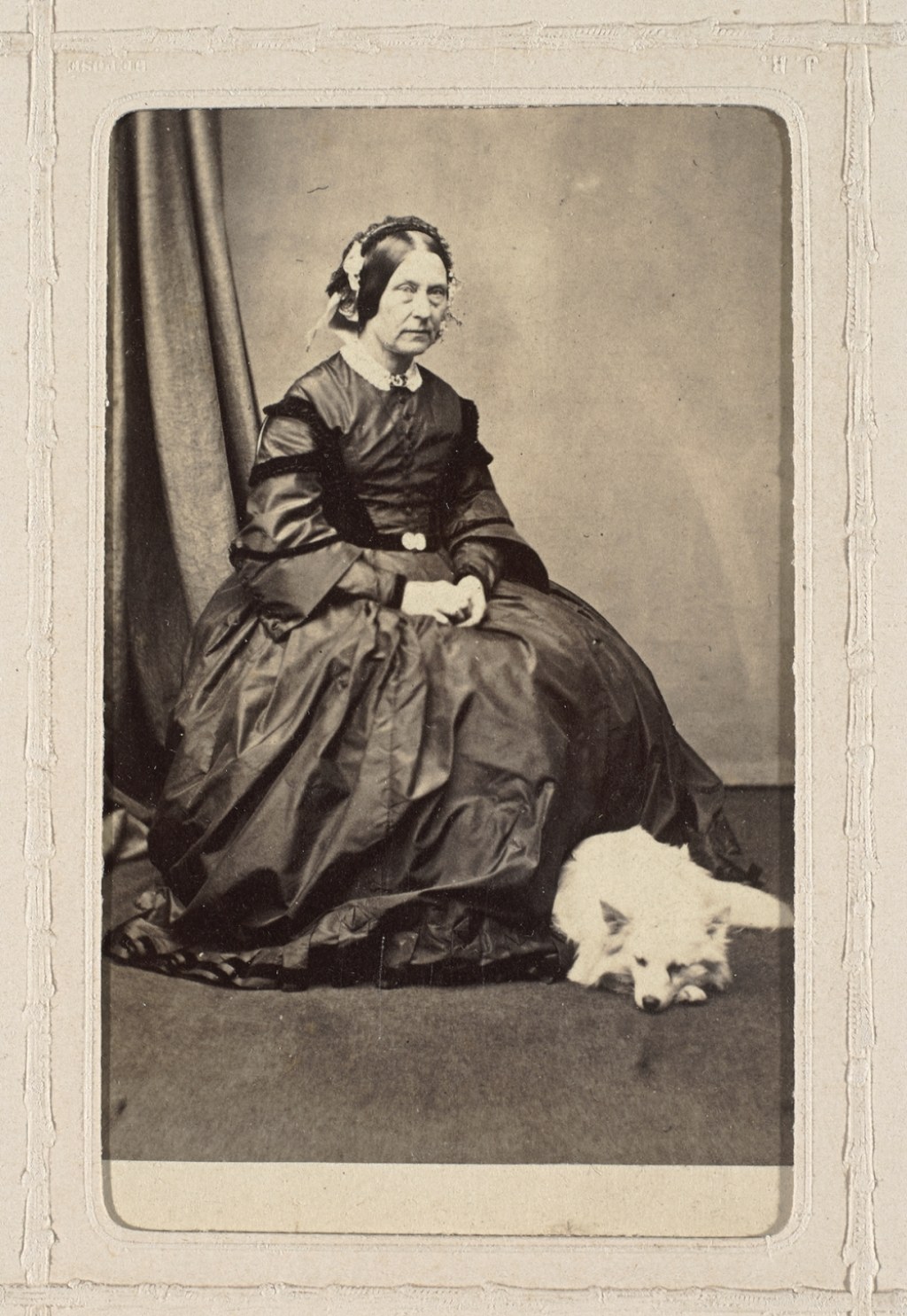Discover The Enchanting World Of Victorian Pets: Unleash Your Imagination And Dive Into History!
Victorian Pets: A Fascinating Glimpse into the Pet Culture of the Victorian Era
Dear Pets Lovers,
Welcome to a journey back in time where we explore the captivating world of Victorian pets. In this article, we will delve into the various aspects of pet ownership during the Victorian era, shedding light on the intriguing relationship between humans and their furry companions. Join us as we uncover the historical significance and unique characteristics of Victorian pets.
1 Picture Gallery: Discover The Enchanting World Of Victorian Pets: Unleash Your Imagination And Dive Into History!

Introduction
The Victorian era, spanning from 1837 to 1901, was a time of great societal change and technological advancements. It was also a period where pets became increasingly popular among the Victorian elite. As the middle class expanded, so did the desire for companionship in the form of pets. This marked a shift in attitudes towards animals, as they were no longer solely seen as utilitarian creatures but as cherished members of the family.
During the Victorian era, pets served various roles, including providing companionship, offering social status, and even symbolizing certain virtues. In this article, we will explore the different types of Victorian pets, their significance, and the roles they played in the lives of their owners.
Types of Victorian Pets

Image Source: gallery.ca
Victorian pets encompassed a wide range of animals, including dogs, cats, birds, rabbits, horses, and even exotic creatures such as monkeys and parrots. Each pet had its own unique characteristics and served different purposes in Victorian society.
1. Dogs 🐶
Dogs were perhaps the most popular pets during the Victorian era. They were valued for their loyalty, companionship, and ability to guard the home. Breeds such as the Pomeranian, Cavalier King Charles Spaniel, and Yorkshire Terrier were particularly favored by Victorian pet owners.
2. Cats 🐱
Cats, with their independent nature and graceful demeanor, were also cherished pets during the Victorian era. They were often associated with femininity and were kept primarily for their companionship. Popular cat breeds included the Siamese, Persian, and Maine Coon.
3. Birds 🐦
Victorian pet owners frequently kept birds as pets, particularly canaries and parakeets. The melodious songs of canaries brought joy and served as a source of entertainment, while parakeets added vibrant colors to Victorian households.
4. Small Mammals 🐇
Small mammals such as rabbits and guinea pigs were popular pets, especially among children. They were relatively easy to care for and provided companionship and amusement.
5. Exotic Pets 🐒
As the Victorian era witnessed a surge in exploration and colonialism, exotic pets gained popularity among the elite. Monkeys, parrots, and tortoises were among the exotic creatures that adorned the homes of the wealthy.
1. Dogs in Victorian Society
Dogs played a significant role in Victorian society. They were not only beloved companions but were also associated with social status and wealth. The choice of dog breed often reflected the owner’s personality and position in society. For example, small lap dogs were favored by women of high social standing, while larger breeds were owned by men who sought to display their power and dominance.
2. Cats as Symbolic Pets
Cats, on the other hand, were seen as mysterious and graceful creatures. They were often associated with femininity and were believed to bring good luck to their owners. Cats were also viewed as protectors against evil spirits and were kept to ward off bad luck.
3. Birds: A Melodious Delight
Birds, particularly canaries, were highly valued for their beautiful songs. They were often kept in ornate cages and their melodies brought joy to Victorian households. Canary breeding became a popular hobby, and competitions were held to determine the bird with the most melodious voice.
4. Small Mammals: Companions for All
Small mammals, such as rabbits and guinea pigs, were popular pets among both the affluent and the working class. They were easy to care for and provided companionship for people of all ages. Many Victorians kept them as pets, indulging in the joy of their playful antics.
5. Exotic Pets: A Display of Wealth
Exotic pets, such as monkeys and parrots, were a symbol of wealth and status. Owning these rare creatures showcased the owner’s ability to procure and care for unique animals from far-off lands. Exotic pets were often displayed in elaborate cages and became a source of fascination for visitors.
The What, Who, When, Where, Why, and How of Victorian Pets
1. What Were Victorian Pets?
Victorian pets were animals that were kept for companionship, entertainment, and as a symbol of social status. They ranged from dogs and cats to birds, small mammals, and exotic creatures.
2. Who Owned Victorian Pets?
Victorian pets were owned by individuals from various social classes, including the wealthy elite, the emerging middle class, and even the working class. However, pet ownership was more prevalent among the affluent, as they had the means to afford and care for pets.
3. When Did Victorian Pets Become Popular?
Pet ownership became increasingly popular during the Victorian era, as societal attitudes towards animals shifted. The expanding middle class, advancements in veterinary medicine, and the rise of pet-related industries contributed to the growing popularity of pets.
4. Where Were Victorian Pets Kept?
Victorian pets were primarily kept in the homes of their owners. Dogs and cats enjoyed the freedom of roaming the house, while birds were often kept in ornate cages. Exotic pets, such as monkeys, were sometimes housed in specialized enclosures or private menageries.
5. Why Were Victorian Pets Kept?
Victorian pets were kept for various reasons. They provided companionship, offered a sense of security, and symbolized social status. Pets were also believed to have therapeutic benefits, improving the mental and emotional well-being of their owners.
6. How Were Victorian Pets Cared For?
Victorian pets were cared for in various ways. They were provided with food, shelter, and medical attention, just as pets are today. However, the level of care and attention varied depending on the social class and resources of the pet owner.
Advantages and Disadvantages of Victorian Pets
Advantages of Victorian Pets
1. Companionship: Victorian pets provided companionship and emotional support to their owners, especially during periods of loneliness or social isolation.
2. Social Status: Owning a pet, especially an exotic or rare breed, symbolized wealth and social status, elevating the owner’s standing in Victorian society.
3. Entertainment: Pets, particularly birds and dogs, provided entertainment through their songs and playful nature, bringing joy to Victorian households.
4. Emotional Well-being: Victorian pets were believed to improve the mental and emotional well-being of their owners, contributing to a happier and more fulfilling life.
5. Therapeutic Benefits: The act of caring for a pet was seen as therapeutic during the Victorian era, providing a sense of purpose and reducing stress levels.
Disadvantages of Victorian Pets
1. Cost: Owning and caring for pets, especially exotic ones, could be financially burdensome for some Victorian pet owners.
2. Health Concerns: The lack of proper veterinary care and knowledge during the Victorian era meant that pets could be susceptible to diseases and health issues.
3. Responsibility: Caring for pets required time, effort, and resources, which could be challenging for pet owners with busy lives or limited resources.
4. Social Restrictions: Victorian pet owners had to adhere to social norms and rules regarding pet ownership, such as keeping dogs on leashes and preventing them from causing a public nuisance.
5. Emotional Attachment: The loss of a beloved pet could be emotionally devastating for Victorian pet owners, as pets were often considered cherished members of the family.
Frequently Asked Questions (FAQs)
1. Can you elaborate on the role of dogs in Victorian society?
Dogs played various roles in Victorian society, including providing companionship, guarding homes, and symbolizing social status. They were highly valued and often chosen based on their breed attributes.
2. Were there any famous Victorian pets?
Yes, there were several famous Victorian pets, such as Dash, Queen Victoria’s beloved Cavalier King Charles Spaniel, and Peter, Emily Dickinson’s faithful Newfoundland dog.
3. What types of birds were commonly kept as pets during the Victorian era?
Canaries and parakeets were popular bird pets during the Victorian era. Canaries were cherished for their beautiful songs, while parakeets added vibrant colors to households.
4. Did Victorian pet owners dress up their pets?
Yes, some Victorian pet owners enjoyed dressing up their pets, particularly small dogs. Outfits and accessories were designed to showcase the pet owner’s fashion sense and social status.
5. Were there any regulations or laws regarding Victorian pet ownership?
Yes, there were regulations and laws regarding pet ownership during the Victorian era. For example, dog owners were required to keep their pets on a leash in public spaces to prevent them from causing a disturbance.
Conclusion: Embracing the Victorian Pet Culture
As we conclude our exploration of Victorian pets, it is evident that the pet culture of the Victorian era had a profound impact on the relationship between humans and animals. Pets were treasured companions, symbols of social status, and sources of joy and entertainment.
While the way we view and care for pets may have evolved since the Victorian era, the love and appreciation for these furry friends remain constant. Let us continue to cherish and care for our pets, honoring the legacy of Victorian pet owners who paved the way for our modern-day pet culture.
Final Remarks
As we bid farewell to our journey into the world of Victorian pets, it is important to acknowledge that societal attitudes towards pet ownership have evolved over time. The Victorian era marked a significant shift in the way animals were viewed and cared for, laying the foundation for the pet culture we know today.
However, it is crucial to remember that pet ownership comes with responsibilities. Providing a loving, safe, and nurturing environment for our pets should always be a top priority. Let us continue to learn from the past and strive to be responsible and compassionate pet owners, ensuring that our furry friends receive the care and love they deserve.
This post topic: Pets



